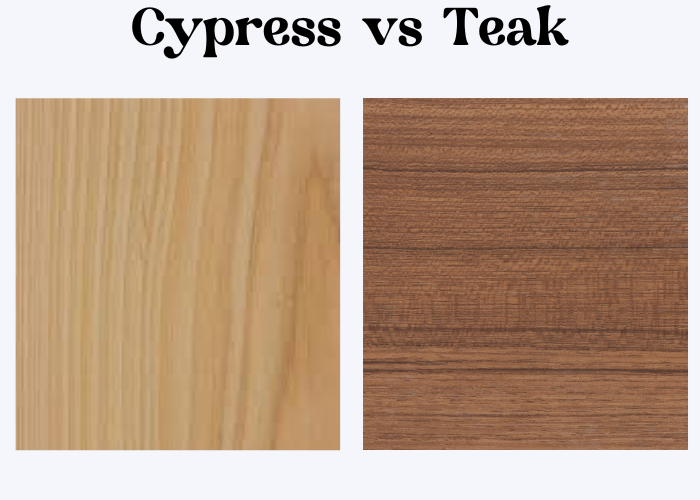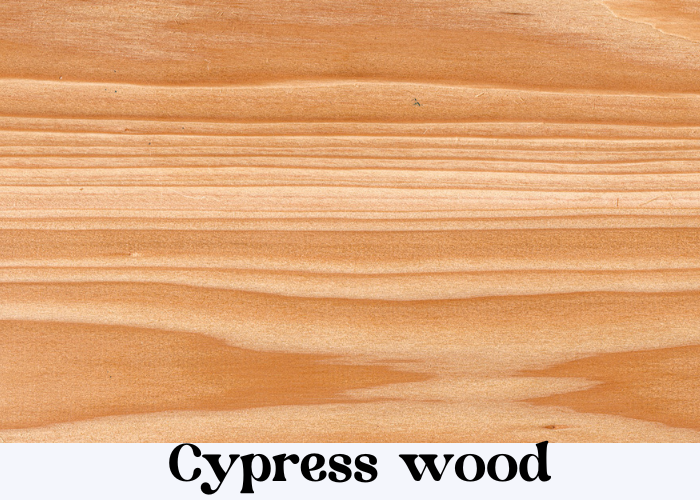Cypress Wood
Cypress timber is a totally sturdy and useful form of timber. People love it as it lasts a long term and doesn’t easily rot or decay. It also seems beautiful, which makes it splendid for lots unique tasks, each outside and inside the house.
But what makes cypress woods so special? In this blog, we’ll provide an explanation for everything about cypress wooden, together with the different sorts, what makes it sturdy, the coolest and awful factors, and the quality ways to use it.
History of Cypress Wood
Cypress wood has been important to different cultures for thousands of years, with many uses and meanings across the world. Let’s explore its rich history and how it has been valued by various civilizations.
Ancient Uses and Importance
Early Civilizations: People first used cypress wood around 2500 BCE in ancient Sumer (now Iraq). It was a key material in construction because of its strength. Records from 2100 BCE mention cypress trees being used for important buildings.
Egyptian Culture: Although cypress trees didn’t grow in Egypt, the Egyptians imported the wood for making coffins, furniture, and burial items. Its long-lasting nature made it perfect for preserving objects meant for the afterlife.
Mediterranean Cultures: Cypress wood was popular among the Elamites, Persians, Greeks, and Romans. It was used for building, religious items, and more, showing how important it was across different societies.
Cypress in the Americas
Native American Tribes: In North America, Native American tribes saw cypress trees as both spiritual and useful. They used the wood to make canoes and shelters because it didn’t rot easily, making it great for building.
Colonial Times: When Europeans came to America, they also valued cypress wood, especially for building homes and ships. In the southern U.S., where it is humid, cypress was perfect because it resisted decay.
Industrial Era and Deforestation
Timber Boom: In the late 1800s and early 1900s, cypress wood became highly popular in the U.S., especially in Louisiana and Florida. Logging companies cut down large areas of cypress forests, which led to deforestation. By the 1920s, many of the old cypress forests were gone.
Environmental Awareness: People eventually realized that cypress trees are important for the environment. They help control floods and filter water. This led to efforts to protect and conserve cypress trees after much of the damage had already been done.
Types of Cypress Wood
Cypress wood comes from different kinds of cypress trees. These trees mainly belong to two groups called Cupressus and Taxodium. Let’s look at the main types of cypress wood and what they are used for.
True Cypress Species
Bald Cypress (Taxodium distichum)
What It Is: A tree from the southeastern United States that loses its leaves in winter. It has unusual “knees” that stick out of the ground or water.
Uses: Great for outdoor furniture, decks, and siding because it doesn’t rot easily. It’s also used in boat making.
Monterey Cypress (Cupressus macrocarpa)
What It Is: A tall tree from California that can grow up to 80 feet with a wide, uneven shape.
Uses: Mostly used in gardens and landscaping, often as a windbreak because it’s so tall and thick.
Italian cypress (Cupressus sempervirens)
What It Is: A tall, skinny tree from the Mediterranean that can also reach 80 feet.
Uses: Mostly planted for decoration in gardens and landscapes because of its graceful, tall shape.
Arizona Cypress (Cupressus arizonica)
What It Is: This tree grows well in dry areas and has blue-gray leaves. It can reach heights of up to 40 feet.
Uses: Great for landscaping and preventing soil erosion in dry regions.
Gowen Cypress (Cupressus goveniana)
What It Is: A slow-growing tree found on the coast of California, usually growing up to 50 feet.
Uses: Mostly used as an ornamental tree because it looks unique.
False Cypress Species
Hinoki Cypress (Chamaecyparis obtusa)
What It Is: A large tree from Japan with wood that smells nice. It can reach heights of up to 100 feet.
Uses: Valued for its beauty and used in traditional Japanese buildings and furniture.
Lawson Cypress (Chamaecyparis lawsoniana)
What It Is: A tree known for its pretty blue-green leaves and ability to grow very large.
Uses: Often planted in gardens because it looks beautiful and adds color to landscaping.
Japanese False Cypress (Chamaecyparis pisifera)
What It Is: A smaller tree that’s popular in gardens for its interesting leaves.
Uses: Mostly used as a decorative plant in landscaping.
Characteristics of Cypress Wood

Cypress wood is well-known for its special qualities, making it a popular choice for many projects, especially outdoors. Here are the key features of cypress wood:
Physical Properties
Color: Cypress wood has a heartwood that can be light yellow to medium brown, while the outer part (sapwood) is almost white. This color difference adds to its beauty in furniture and buildings.
Grain and Texture: The grain of cypress wood is usually straight, and the texture is smooth, making it easy to work with. Some types may feel a bit oily because of the natural oils in the wood.
Weight and Density: Cypress wood is lighter than many other types of wood, which makes it easier to handle. Its moderate density gives it strength while still being easy to use for different projects.
Durability
Rot Resistance: One of the best features of cypress wood is that it naturally resists rot and decay. This is due to natural oils, like cypressene, found in the wood. This makes it a great choice for outdoor projects like decks, siding, and garden furniture.
Insect Resistance: Cypress wood is also resistant to insect damage, including termites. This quality helps it last longer outdoors.
Longevity: With the right care, cypress wood can last many years—often decades—making it a low-maintenance choice for different projects.
Workability
Machining: Cypress wood is generally easy to cut and shape. It sands down nicely and works well with various tools. However, small knots in the wood can sometimes cause minor issues when cutting.
Finishing: The wood takes stains and coatings well, allowing you to apply different finishes that can enhance its look and protect it from the weather.
Stability
Cypress wood is dimensionally stable, meaning it doesn’t warp or twist easily over time. This stability makes it suitable for both structural projects and decorative uses, ensuring it holds its shape well in different applications.
Overall, cypress wood is a versatile and reliable choice for many building and crafting projects, especially when durability and aesthetic appeal are important.
Benefits of Cypress Wood
Cypress wood is highly valued for its unique qualities that make it perfect for a variety of applications, especially outdoors. Here are the key benefits of cypress wood:
Excellent Rot Resistance: Cypress wood is naturally resistant to rot thanks to oils like cypressene. This property makes it ideal for outdoor projects such as decking, siding, and garden furniture.
Insect Resistance: Cypress wood is also resistant to insect damage, including termites. This resistance helps extend the lifespan of the wood in outdoor settings.
Stability: Cypress wood maintains its shape well over time, meaning it is less likely to warp or twist. This stability makes it a reliable choice for both structural and decorative applications.
Lightweight Yet Strong: Cypress wood is lightweight, making it easy to handle. Despite its lightness, it has a Janka hardness rating of 510 lbf, giving it good strength for various uses.
Easy to Work With: Cypress wood is user-friendly; it cuts smoothly, sands easily, and takes finishes well. This makes it popular among woodworkers and people who enjoy DIY projects.
Attractive Appearance: The wood features a beautiful color range from light yellow to medium brown for the heartwood, while the sapwood is nearly white. This color variation adds visual appeal to furniture and structures.
Pleasant Scent: Some varieties of cypress wood have a distinctive and pleasant scent, which can enhance the experience of using it in your home or projects.
Drawbacks of Cypress Wood
While cypress wood has many benefits, there are also some factors to consider before making a choice. Here are a few potential drawbacks:
Durability of Younger Cypress: Younger cypress trees are less durable than older ones. While older cypress is more resilient, it can also be more expensive.
Higher Costs for Distant Buyers: If you live far from the Southeastern U.S., where cypress trees grow abundantly, the cost of cypress wood may be higher due to shipping and availability.
Strong Odor: Some varieties of cypress wood may emit a strong and unpleasant odor, which can be irritating for some people.
Regular Sealing Needed: To maintain its original rich brown color, cypress wood requires regular sealing. Without proper care, it can fade over time.
Susceptibility to Damage: Due to its moderate density, cypress wood can be more prone to dents, dings, and scratches compared to harder woods. Careful handling is necessary to keep it looking good.
Where is Cypress Wood Found?
Cypress trees are primarily found in the Southeastern United States, particularly in:
- Florida
- Louisiana
- Alabama
- Georgia
- Mississippi
- Texas
The two main species used for lumber are bald cypress (Taxodium distichum) and pond cypress (Taxodium distichum var. nutans).
Also read: Acacia vs Teak: Comparing Two Popular Hardwoods
Cypress vs. Other Popular Woods
Cypress wood is often compared to several other types of wood, especially for outdoor uses. Here’s how it measures up against some common alternatives:
1. Cypress vs. Western Red Cedar
Durability: Both cypress and western red cedar resist decay and insects. However, western red cedar generally withstands extreme weather conditions better, making it a good choice for harsh climates.
Workability: Western red cedar is easier to work with because it has fewer knots and a more even grain. Cypress may need pre-drilling for nails and can tear during cutting.
Color and Aesthetics: Cypress has a light yellow to medium brown color, while western red cedar has a reddish-brown hue. Your choice may depend on which look you prefer.
2. Cypress vs. Teak

Cost: Teak is usually more expensive than cypress due to its high demand and limited availability. Cypress offers a more budget-friendly alternative while still being durable.
Durability: Teak is famous for its excellent resistance to moisture and decay, often outperforming cypress in tough marine environments. Still, cypress is a reliable option for many outdoor projects.
Workability: Teak can be difficult to glue because of its high oil content, while cypress is generally easier to finish and work with.
3. Cypress vs. Ipe
Density and Weight: Ipe is much denser than cypress, making it incredibly strong but also heavier, which can make it harder to handle and install.
Durability: Ipe has better rot resistance than cypress, making it a top choice for decking in wet areas. However, it can be trickier to work with because of its hardness.
Cost: Ipe is typically more expensive than cypress, which can influence your decision based on your budget.
4. Cypress vs. Oak (White Oak)
Strength: White oak is significantly harder than cypress, with a Janka hardness rating of about 1,360 lbf compared to cypress’s 510 lbf. This makes white oak suitable for applications that require more strength and durability.
Resistance: While both woods have good resistance, white oak is often preferred for furniture and cabinetry because of its strength and aesthetic appeal in indoor settings.
Cost: White oak can be pricier than cypress, especially for higher-quality grades.
Also read: Brazilian Wood: Types, Uses and Benefits
Why Cotton wood Trees Are So Special ?
FAQ
1. What is Cypress Wood Good For?
Cypress wood is versatile and suitable for a wide range of applications:
- Outdoor construction: Siding, decking, fencing due to its rot and insect resistance
- Furniture: Durable and attractive for outdoor furniture like benches and tables
- Boat building: Takes advantage of cypress’s water-resistant properties
- Interior projects: Paneling, millwork, cabinetry, flooring
- Ornamental uses: Attractive appearance makes it popular for gardens and landscapes
- Picture frames, birdhouses, garden planters: Lightweight yet sturdy
2. Is Cypress an Expensive Wood?
Cypress is moderately priced, landing in the mid-range for American domestic woods. Expect to pay $2 to $6 per board foot for standard boards. However, older growth cypress can be more expensive.
3. Is Cypress a Hard or Soft Wood?
Cypress is a softwood that grows alongside hardwoods. It has a Janka hardness rating of 510 lbf, making it moderately soft.
4. How Long Will Cypress Wood Last?
With proper care, cypress can last for many years—often decades—making it a low-maintenance option for various projects. Heartwood is resistant to termites and has a life expectancy greater than 40 years above ground and up to 25 years in-ground.

